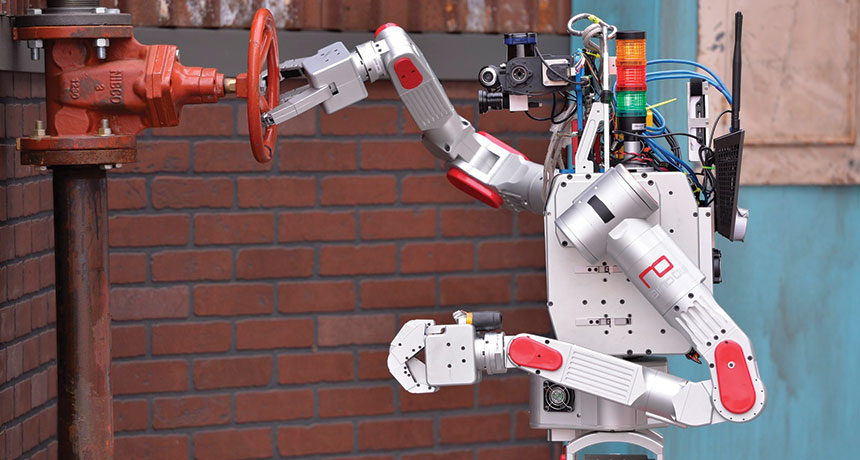‘Rise of the Robots’ chronicles race to build disaster-relief bots
TV documentary highlights challenges of designing humanlike machines

A humanoid robot named Hubo uses a mechanical hand to turn a valve at the finals of the DARPA Robotics Challenge in California.
DARPA





